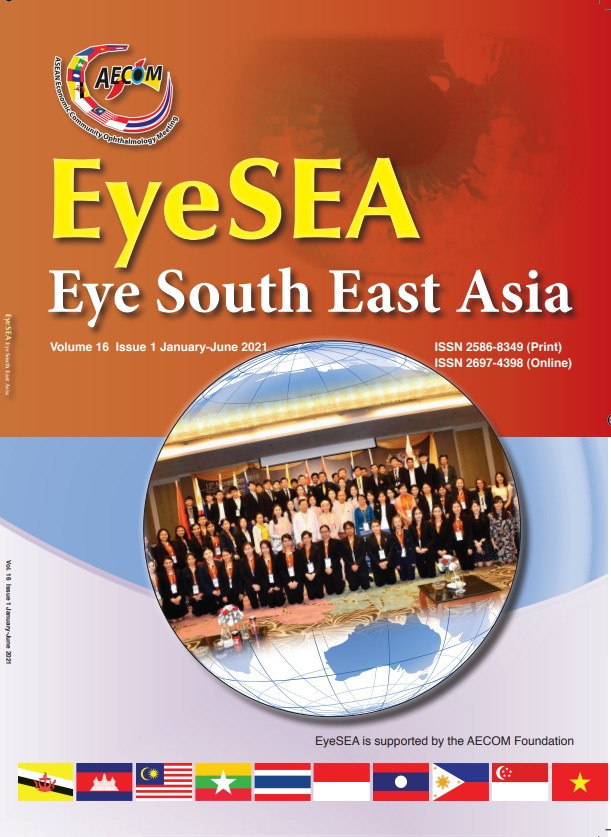Surgical time aspect of learning curve in primary pterygium excision by ophthalmology trainees
Main Article Content
Abstract
ABSTRACT
Backgrounds:
Pterygium excision is primitive commonly surgery in ophthalmology trainees, Surgical time aspect of learning curve is a key point for surgical training.
Objectives:
To study surgical time of primary pterygium excision among first year Ophthalmology trainees.
Methods:
The study was conducted as Prospective comparative study among seven first year Ophthalmology trainees were monitored for surgical times all their cases of pterygium excision through one year at Thammasat University Hospital. Data for baseline characteristics of trainees and patients, surgical time were collected. The results were analyzed to obtain an average value, one-way ANOVA, fisher’s exact, linear regression as well as surgical times stabilization with consecutive cases is visualized by a Locally Weighted Scatterplot Smoothing (LOWESS) best fit line.
Results
A total of 55 eyes of 55 patients with primary pterygium excision was performed. There was no statistical significant different among patient’s sex, site of surgery, location of pterygium. Ophthalmology trainees have performed pterygium surgery an average of 7.9 cases per trainee. Mean of speculum insertion to local anesthetic injection time, pterygium excision time, graft placement time, after graft placement to remove speculum time and total surgical time was 2.0, 29.7, 41.9, 2.1 and 75.7 minutes respectively. Speculum insertion to local anesthetic injection times, pterygium excision times and after graft placement to remove speculum time, seem to be steady after experiencing over 5 cases. Graft placement times would decrease significantly after passing 5-10 cases.
Conclusion
Mean of total surgical time was 75.7 minutes. The surgical time of primary pterygium excision seem more stable since the fifth case. The more operations are, the less time spending will be.
Conflicts of Interest: No conflicts of interest in this study.
Article Details

This work is licensed under a Creative Commons Attribution-NonCommercial-NoDerivatives 4.0 International License.


